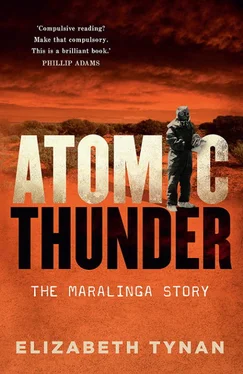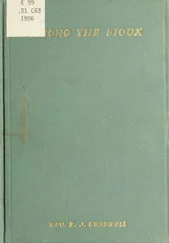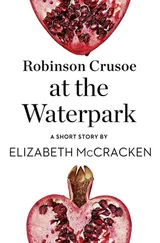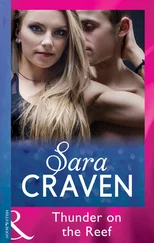3
Monte Bello and Emu Field
We’ve got to have this thing over here whatever it costs…
We’ve got to have the bloody Union Jack on top of it.
Ernest Bevin, UK foreign secretary, at GEN.75, 1946.
I saw this ominous black atom bomb sitting on the top of the tower, bolted in place, winched up to the top on guiderails that I’d laid in. And I saw a crow sitting on it. I said to the crow, ‘if I were you, I’d shift’.
Len Beadell, legendary surveyor of Central Australia, speaking in 1991 about the first Emu Field atomic test held in 1953.
Australia in the 1950s was not a country casting a critical eye at the development of, or consequences arising from, nuclear testing. There is little evidence of the doubts and fears which American scientists who pioneered the nuclear project expressed.
Paul Malone and Howard Conkey,
Canberra Times , 1984.
The McMahon Act was a terrible blow to William Penney and his team at Aldermaston. They had designed a technologically advanced atomic weapon, but they couldn’t test it at the American sites. As Penney said later in his statement to the Royal Commission, ‘I consistently took the view that I would prefer to use the existing American facilities, either in Nevada or the Pacific’. He was most at home in Nevada, where he had earned his nuclear weapons stripes in the inner circle of the Manhattan Project, and where he could work among trusted colleagues.
The decision to bar outsiders looked permanent in 1946, and the British had no time to lose. Some behind-the-scenes negotiation for ongoing low-key co-operation had taken place, albeit with some onerous conditions applied by the Americans, but all hope collapsed in 1950 when Klaus Fuchs was exposed as an atomic spy. The US could not afford to dice any further with disaffected scientists looking to make a high-minded ideological point. The decision was final. The Americans amended the Act in 1958, well after the first British atomic device had been tested, and invited them back. But until then Britain was on her own.
Penney assumed the next option would be Canada, which had been directly involved in the Manhattan Project. He was familiar with its expertise and infrastructure and conducted a feasibility study there in the late 1940s. In addition to a test site, he was looking for a long-term collaboration. The aim was to conduct the first British test in the northern summer of 1952. The location needed to be quite particular, because Penney was keen to test the effects of detonating a weapon based on his Blue Danube design aboard a ship. He wanted to analyse the minutiae of a phenomenon known as base surge, which involved a large upward movement of radioactive water into the air, when the products of a nuclear explosion mixed with fine droplets of water. Disappointingly, none of the seven ports he examined was suitable for a shipboard detonation. Nevertheless, Canada remained on the drawing board.
According to official British historian Margaret Gowing, Penney envisaged one or two annual trials for several years, at a site generously staffed and equipped with instruments. He recommended 200 scientists, 50 technicians and 100 industrial workers, at huge potential cost, for the first trial. ‘Most of the scientists would be provided by Britain, with help from the Canadians in chemical analysis and radiological safety, and most of the industrial workers by Canada; Canada would undertake the construction work; costs would be shared on an agreed basis.’ Canada’s wartime experience in contributing to the Manhattan Project provided a strong platform for a Canadian test program.
Penney had a variety of criteria he applied to the seven potential Canadian sites, mostly to do with climatic conditions, infrastructure and isolation. Churchill, Manitoba, on the west coast of Hudson Bay, seemed ideal, even though the shallowness of its port made base surge observations difficult or unlikely. Churchill is about 1600 kilometres north of the provincial capital of Winnipeg and extremely remote, not to mention unspeakably cold during a substantial part of the year. Today it is best known as a tourist destination to view polar bears in the wild. In his report, Penney acknowledged that the area would be contaminated by the proposed tests but described the land near Churchill as ‘valueless’.
History shows that the British never did test a nuclear weapon in Canada. In fact, as scholars John Clearwater and David O’Brien noted, there is no evidence ‘to show that the elaborate proposal, which included detailed plans for roads, barracks and other infrastructure, ever went to the ministerial level’. When the extent of the proposed contamination of the Churchill site became clear, the Canadians quietly shelved the idea. Again, Britain was on her own.
Meanwhile, Australia came up on the radar. This peaceful backwater of a country seemed a natural choice in many ways: developed, Western, a member of the Commonwealth and a former colony. It possessed huge potential sources of uranium, uninhabited islands and swathes of desert. At that moment in history, a noted Anglo-phile, Robert Menzies, headed its government.
The fact that Australia had virtually no background in matters nuclear, other than the largely expatriate contribution to physics research of Mark Oliphant and a few other scientists, was irrelevant. Britain would control the science. What they needed was space, not scientists and technologists. Prime Minister Attlee made the first approach, and Menzies was almost certainly taken by surprise. Nevertheless, when he received Attlee’s top-secret cable on 16 September 1950, followed up by a telephone call, his instinctive eagerness deterred him from consulting colleagues. Australia’s Monte Bello Islands had cropped up because Penney’s interest in observing base surge had led to canvassing island locations. It rose to the top of the list when relations with the US over atomic matters deteriorated with the arrest of Fuchs, and the Canadians went cold on the sub-Arctic site at Churchill. Other Pacific island nations were also considered but discounted. Groote Eylandt in the Gulf of Carpentaria was briefly on the list but not pursued because of its meteorological conditions.
A swift survey to confirm Monte Bello’s suitability for the proposed historic first British test followed. The top-secret Operation Epicure was overseen by Major General AJH Cassels in the UK Services Liaison Staff Office in Melbourne and by Sir Frederick Shedden, the secretary of the Australian Department of Defence. Their cover story was that they were investigating the feasibility of extending the UK rocket testing project. An ASIO officer joined the survey, the first time the new domestic spy service was involved in the push for atomic weapons. The Royal Australian Navy provided HMAS Karangi as the survey ship and sent HMAS Warrego to prepare a detailed chart of the complicated maritime features of the island group, since little information was available at the time. The project used the term Western Islands, rather than Monte Bello, to maintain secrecy. As well as charting the islands, the crew of the Warrego found an immensely rich natural environment, which they outlined in their report. Many of their biological samples eventually found their way to the British Museum in London.
Epicure was swift indeed. Karangi had done her work by 27 November 1950 and steamed back to Fremantle, bearing a trove of information. Data included depth soundings and information on the tides and the winds. The Epicure results were submitted for review to the AWRE and government representatives in London, where they found favour. In February 1951 the British chiefs of staff agreed to a shipborne atomic test at the Monte Bello Islands. Epicure had established that a maritime explosion and base surge could be tested there.
Читать дальше












